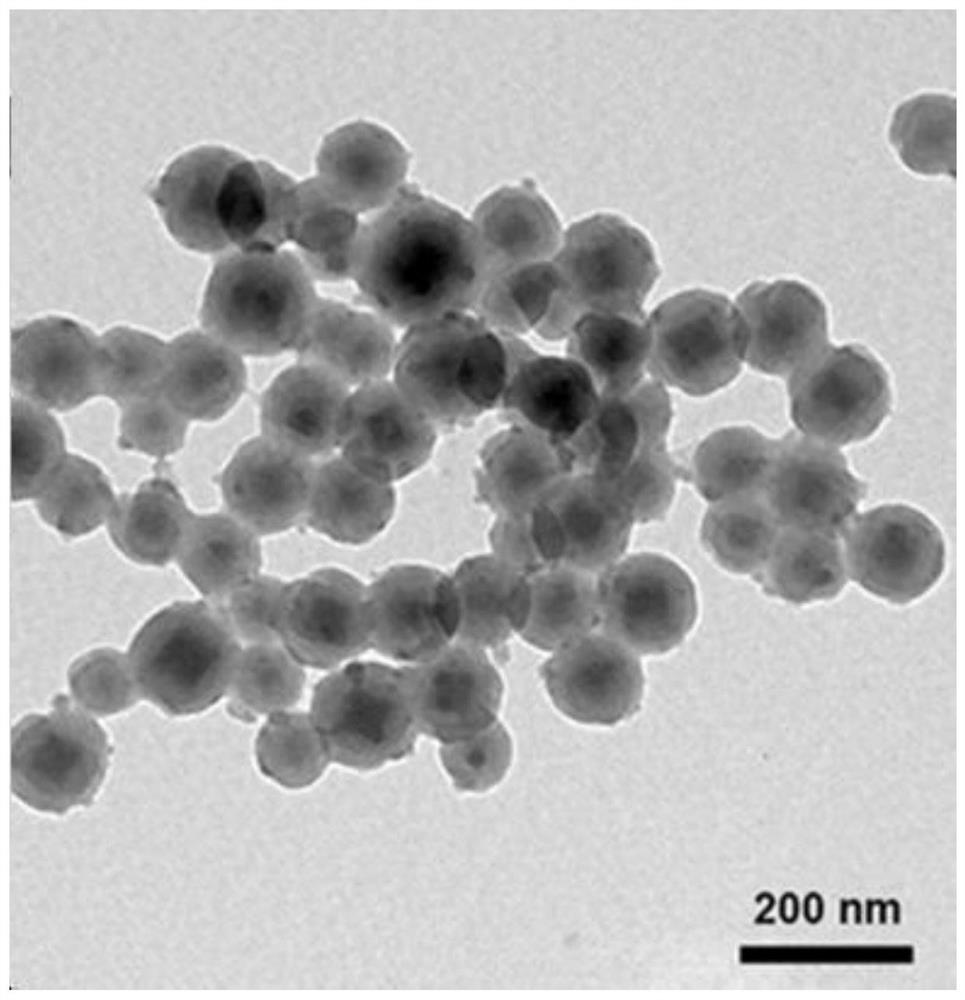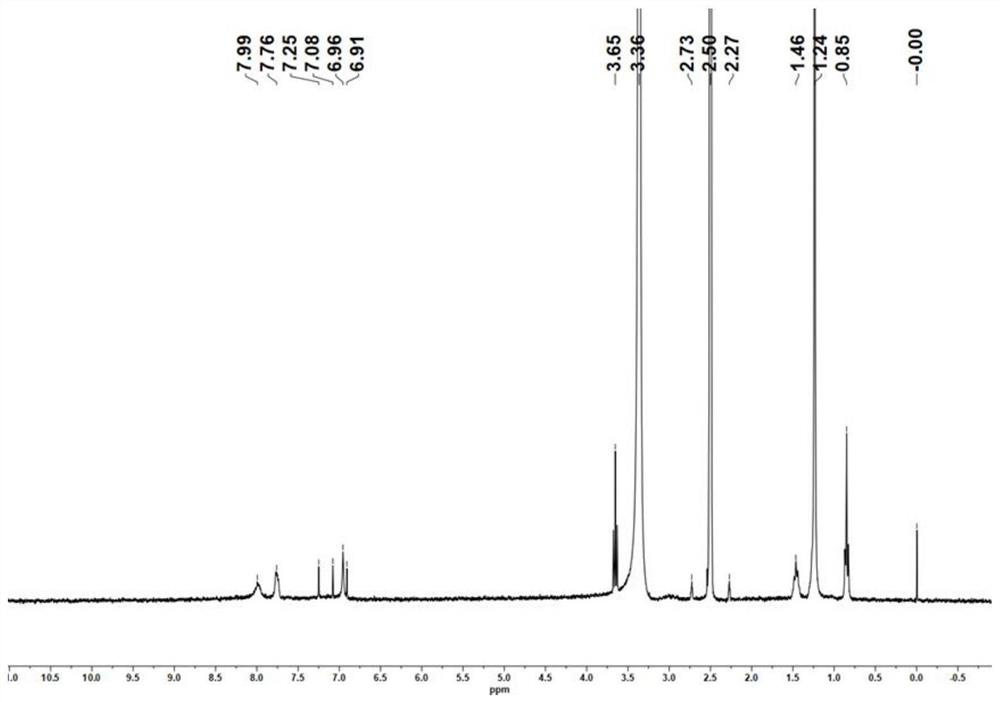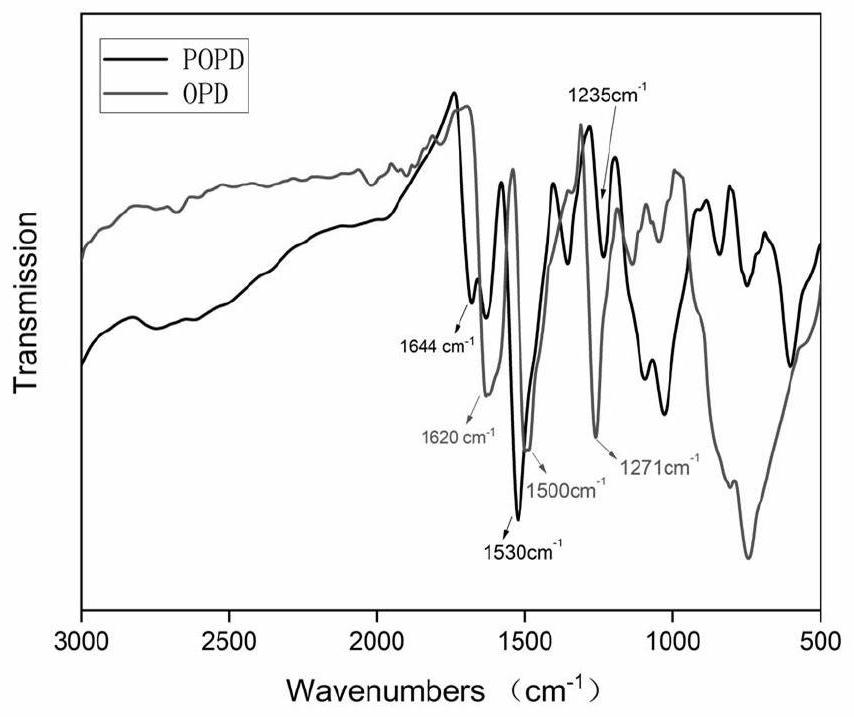Modified nano particle as well as preparation method and application thereof
A nanoparticle and inorganic nanoparticle technology, applied in the field of compounds, can solve the problems of aromatic polymers to be developed
- Summary
- Abstract
- Description
- Claims
- Application Information
AI Technical Summary
Problems solved by technology
Method used
Image
Examples
preparation example Construction
[0045] The present invention also provides a method for preparing the above-mentioned modified nanoparticles, comprising the following steps:
[0046] A) mixing the inorganic nanoparticle dispersion, the aqueous solution of the surfactant, the aqueous solution of o-phenylenediamine and the hydrogen peroxide solution to obtain a mixed solution;
[0047] B) After adjusting the pH value of the mixed solution to 4-6, react at 35-45° C. to obtain modified nanoparticles.
[0048] In the invention, the inorganic nano particle dispersion liquid, the aqueous solution of the surfactant, the aqueous solution of o-phenylenediamine and the hydrogen peroxide solution are mixed uniformly to obtain the mixed liquid.
[0049] The components of the inorganic nanoparticles are the same as above, and will not be repeated here.
[0050] The present invention has no special limitation on the preparation method of the inorganic nanoparticles, which can be commercially available or self-made.
[00...
Embodiment 1
[0078] 1. Synthesis of Prussian blue nanoparticles:
[0079] Prepare 20mL ferric chloride aqueous solution (1.0mmol / L) and 20mL potassium ferricyanide aqueous solution (1.0mmol / L) in advance. The potassium ferricyanide aqueous solution was placed in an ice-water bath for 30 minutes, then 1 mmol of citric acid was added, and shaken for 5 minutes to make it evenly mixed. Prepare a 100ml round-bottom flask and a magnet, pour the above ferric chloride aqueous solution into the flask, and transfer it to a 60°C oil bath for 10 minutes to stabilize. The above potassium ferricyanide solution was added dropwise into the round bottom flask under vigorous stirring, and the solution gradually turned bright blue. Stirring was stopped after 20 min, and 40 mL of acetone was added after the solution was cooled to room temperature, and then centrifuged at 12,000 rpm for 15 min to obtain a blue product, which was washed several times with acetone to obtain Prussian blue nanoparticles. Finally...
Embodiment 2
[0086] 1. Synthesis of Fe3O4 nanoparticles:
[0087] Dissolve 0.811g of ferric chloride in 40mL of ethylene glycol, shake for 30min to form a clear solution, then add 3.6g of sodium acetate and 2.0g of polyethylene glycol (PEG), stir the mixture magnetically for 30min, then put it into a 50mL autoclave , the autoclave was moved into a blast oven at 190° C. for 9 h. Then the reactant was cooled, centrifuged at 12000 rpm for 10 min, the product was alternately washed six times with ethanol and water, and dried in a vacuum oven at 60° C. for 6 h to obtain ferric oxide nanoparticles. Finally, the obtained Fe3O4 nanoparticles were dispersed in 10 mL of deionized water for storage.
[0088] 2. Take 0.2mL ferric oxide nanoparticle dispersion (concentration is 15mmol / L, particle diameter of ferric oxide nanoparticle is 300-500nm), add 3mL sodium lauryl sulfate aqueous solution (concentration is 10mmol / L ), the molar ratio of iron ferric oxide nanoparticles to sodium lauryl sulfate i...
PUM
| Property | Measurement | Unit |
|---|---|---|
| particle diameter | aaaaa | aaaaa |
| thickness | aaaaa | aaaaa |
| particle diameter | aaaaa | aaaaa |
Abstract
Description
Claims
Application Information
 Login to View More
Login to View More - R&D
- Intellectual Property
- Life Sciences
- Materials
- Tech Scout
- Unparalleled Data Quality
- Higher Quality Content
- 60% Fewer Hallucinations
Browse by: Latest US Patents, China's latest patents, Technical Efficacy Thesaurus, Application Domain, Technology Topic, Popular Technical Reports.
© 2025 PatSnap. All rights reserved.Legal|Privacy policy|Modern Slavery Act Transparency Statement|Sitemap|About US| Contact US: help@patsnap.com



